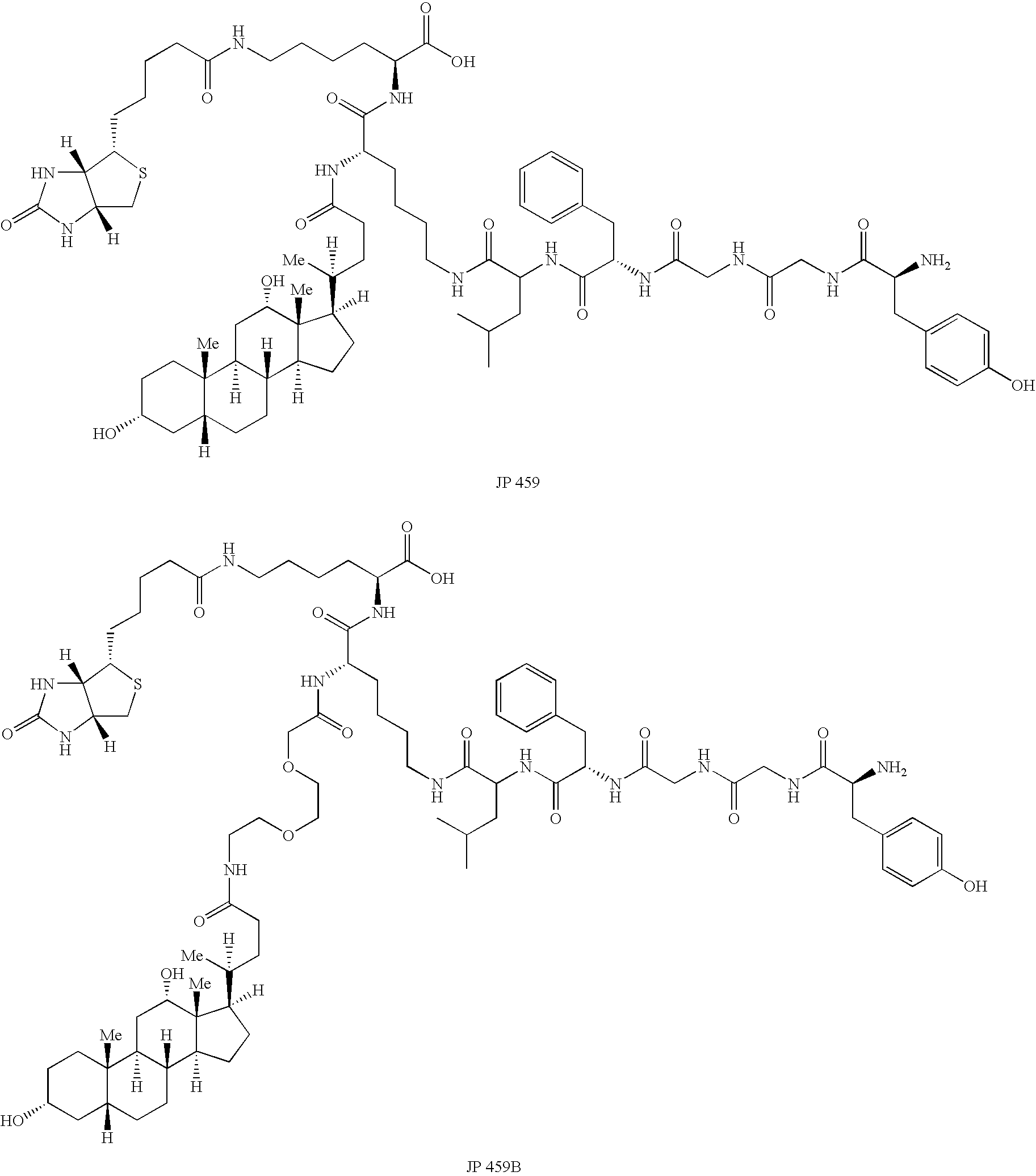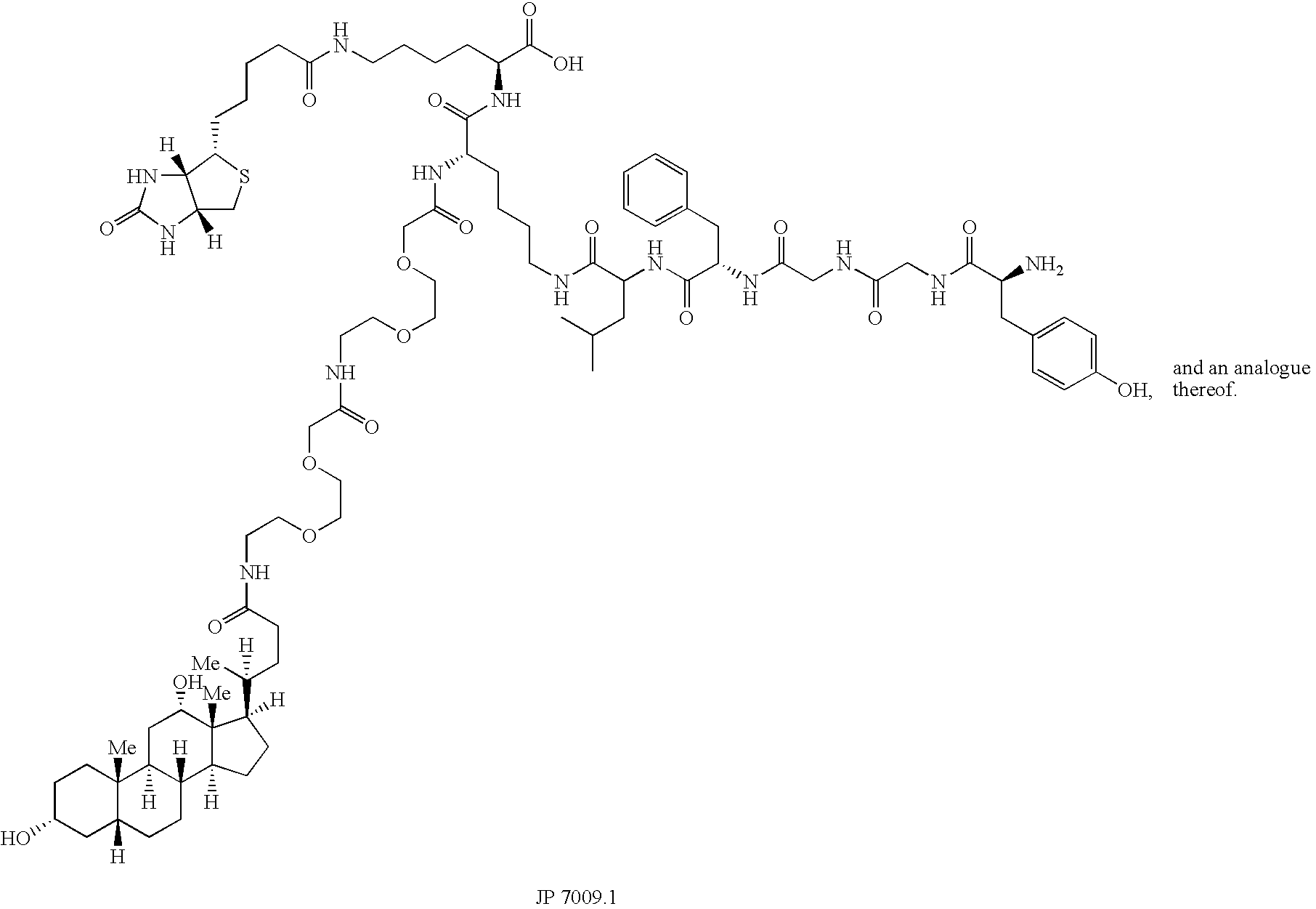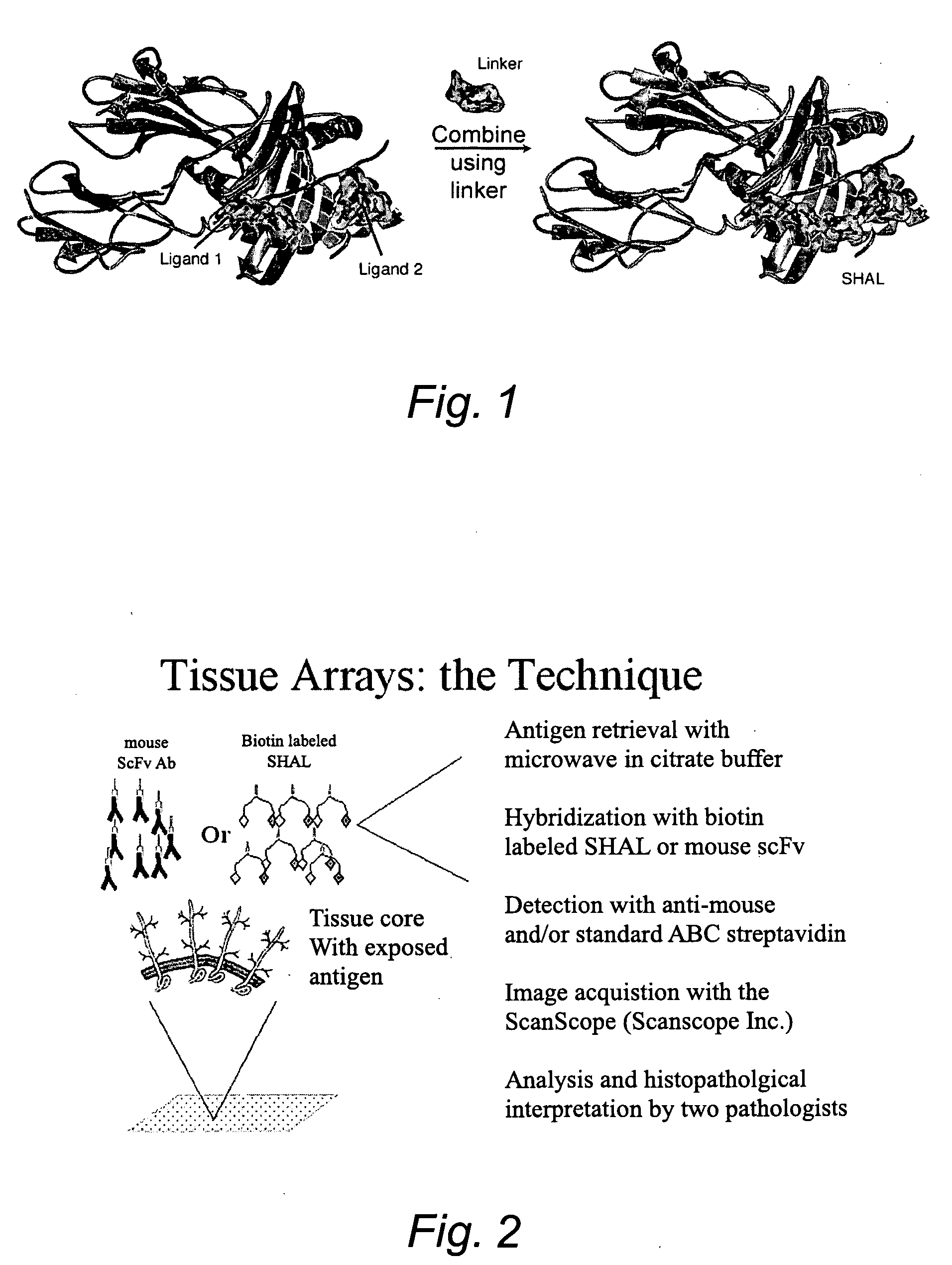Selective high affinity polydentate ligands and methods of making such
a high affinity, selective technology, applied in the direction of peptides, drug compositions, biological testing, etc., can solve the problems of inability to meet the expected potential of antibody-based therapy, chemotherapeutic drugs, and toxic to normal tissues, so as to facilitate the addition of additional moieties and increase the stability and half-life of such molecules
- Summary
- Abstract
- Description
- Claims
- Application Information
AI Technical Summary
Benefits of technology
Problems solved by technology
Method used
Image
Examples
example 1
Creation of HLA-DR10 Specific SHALs
[0309] Preclinical and clinical studies have revealed that the epitopic region (unique region recognized by antibodies) on the beta subunit of HLA-DR 10, and related HLA-DR major histocompatibility cell surface proteins, are particularly attractive targets for systemic radioisotopic therapy for B-cell lymphomas and leukemias and provide other opportunities for cancer treatment and prevention. Although HLA-DR 10 has characteristics in common with other B-cell surface proteins, like CD20, that make it a suitable target, it has disparate characteristics that we believe provide great attractiveness.
[0310] In common with CD20 antigen, the HLA-DR 10 protein is located on the surface of B lymphocytes, persists through B-cell differentiation, but disappears during transformation of the lymphocyte to the plasma cell stage (Epstein et al. (1987) Cancer Res., 47: 830-840). The discrete Lym-1 antigen epitope appears on committed B-cell precursors, but is not...
example 2
Computational Methods For Use in the Creation of SHALS
A) Overview of the Roles and Methods of Molecular Simulations
[0331] As described herein, molecular modeling can be used to initially identify ligands for use in the construction of SHALs and / or for the optimization of SHALs. At present there is no single molecular modeling methodology that can be used to model target molecules, screen for binding ligands, simulate binding of a polydentate SHAL and predict optimal SHAL structure. A number of well established modeling methods, however can be used to facilitate these tasks as described herein.
[0332] Starting at the highest level, the prediction of the tertiary structures target molecules (e.g. protein cancer markers) are typically predicted using highly empirical methods based on primary sequence homology to proteins with experimentally known structure. The accuracy of these so-called homology-based protein structure prediction methods depend on the availability of homologous pr...
example 3
Synthesis and Testing of a Bi-Denatate Shal
[0380] The bivalent SHAL (LeacPLD)2LPDo was synthesized, purified by HPLC and characterized by mass spectrometry. This SHAL has two JP459B bidentate ligands interconnected via a linker and a DOTA attached on the third arm (see, e.g., FIG. 14).
[0381] SHALs were designed around an orthogonally protected lysine residue to facilitate synthesis on solid phase resin. A commercially available Fmoc-protected amino acid-like mini-peg (2 CH2O's) was used as a linker to incrementally increase the distance between the enkephalin and the deoxycholate moieties. Fmoc-biotinyl-lysine was used to introduce biotin into the SHALs for biacore experiments. All SHALs follow the same configuration: CO2H:Biotin-lysine:lysine:(a lysine NH2: 0, 1, 2 mini-peg linker, deoxycholate)(g lysine NH2: LFGGY-NHAc). The bis-bidentate SHAL follows the convention: CO2H:Biotin-lysine:lysine:[(a lysine NH2: 0, 1, 2 mini-peg linker, deoxycholate)(g lysine NH2: LFGGY-NHAc)]2 - an...
PUM
| Property | Measurement | Unit |
|---|---|---|
| angle | aaaaa | aaaaa |
| thickness | aaaaa | aaaaa |
| time | aaaaa | aaaaa |
Abstract
Description
Claims
Application Information
 Login to View More
Login to View More - R&D
- Intellectual Property
- Life Sciences
- Materials
- Tech Scout
- Unparalleled Data Quality
- Higher Quality Content
- 60% Fewer Hallucinations
Browse by: Latest US Patents, China's latest patents, Technical Efficacy Thesaurus, Application Domain, Technology Topic, Popular Technical Reports.
© 2025 PatSnap. All rights reserved.Legal|Privacy policy|Modern Slavery Act Transparency Statement|Sitemap|About US| Contact US: help@patsnap.com



